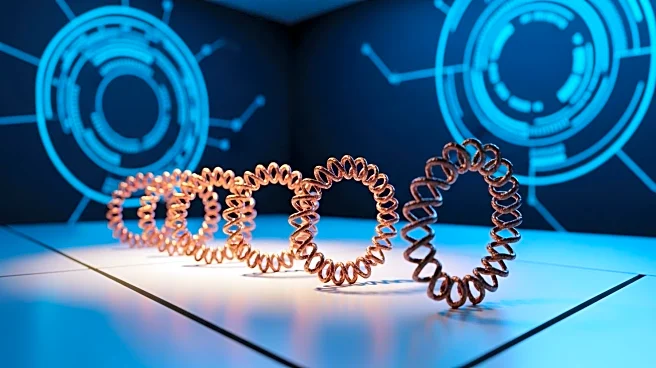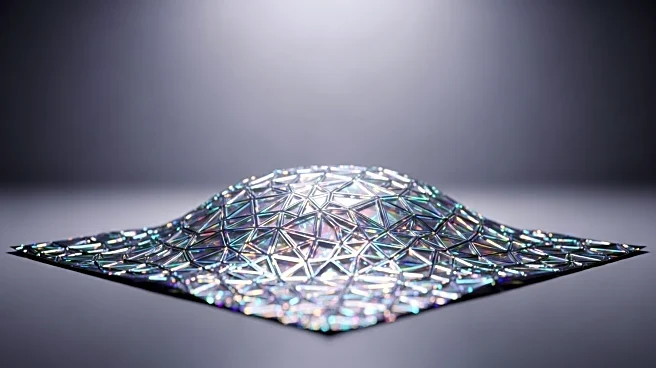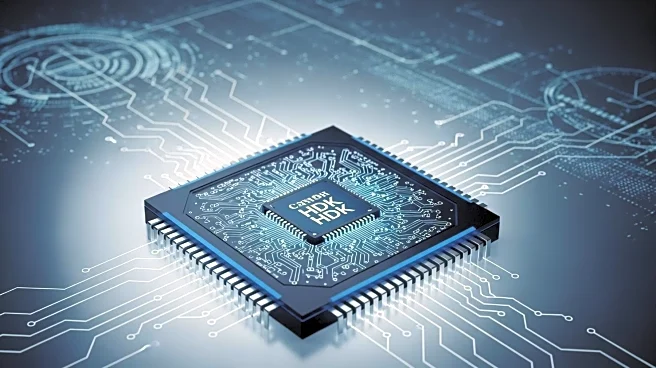What's Happening?
Researchers from Korea University and Seoul National University have made a significant breakthrough in the field of spintronics by developing magnetic nanohelices capable of controlling electron spin. Spintronics, which utilizes the spin of electrons for information processing, promises faster and more energy-efficient data storage and logic devices. The team, led by Professor Young Keun Kim and Professor Ki Tae Nam, successfully created these nanohelices using chiral magnetic materials that operate at room temperature. This development, published in Science, marks a major step forward in spin-nanotechnology. The nanohelices achieve spin polarization exceeding 80% through their unique geometry and magnetism, allowing for spin filtering without complex magnetic circuitry or cryogenics. The researchers fabricated the helices by electrochemically controlling metal crystallization, introducing chiral organic molecules to guide the formation of helices with precise handedness. This innovation enables the control of electron spin direction, a critical challenge in realizing the full potential of spintronics.
Why It's Important?
The development of magnetic nanohelices represents a significant advancement in the field of spintronics, which could revolutionize data storage and processing technologies. By enabling precise control of electron spin at room temperature, this technology offers a more efficient alternative to traditional electronic devices that rely on electric charge flow. The ability to control spin direction without the need for complex magnetic systems or low temperatures could lead to the creation of faster, more energy-efficient devices. This breakthrough has the potential to impact various industries, including computing and telecommunications, by providing a new method for engineering electron behavior. The research also highlights the convergence of geometry, magnetism, and spin transport, paving the way for practical applications in chiral spintronics and the architecture of chiral magnetic nanostructures.
What's Next?
The research team plans to further explore the potential applications of their findings in practical spintronic devices. The ability to control the handedness and number of strands in the nanohelices using their electrochemical method opens up new possibilities for developing scalable, inorganic materials for various technological applications. Future research may focus on integrating these nanohelices into solid-state devices to demonstrate their effectiveness in real-world scenarios. Additionally, the team may investigate the potential for long-distance spin transport and its implications for data transmission and storage technologies. As the field of spintronics continues to evolve, this breakthrough could lead to the development of new devices and systems that leverage the unique properties of electron spin.
Beyond the Headlines
The discovery of magnetic nanohelices capable of controlling electron spin also raises interesting questions about the role of chirality in materials science. While chirality is well-understood in organic molecules, its application in inorganic systems, particularly at the nanoscale, presents new challenges and opportunities. The ability to program the direction of inorganic helices by adding chiral molecules could lead to further innovations in materials chemistry and the development of novel materials with unique properties. This research underscores the importance of interdisciplinary collaboration in advancing scientific knowledge and technological capabilities.











